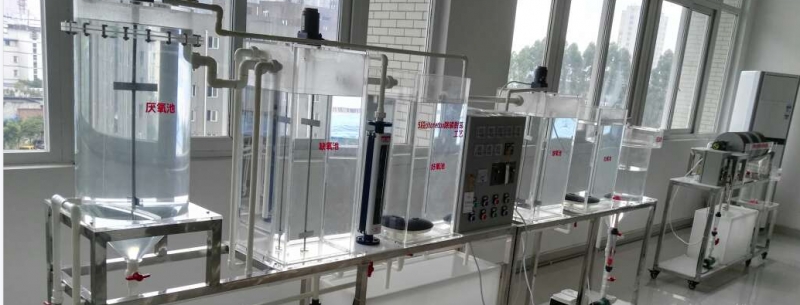News
Ideas of anaerobic/aerobic nitrogen and phosphorus removal operation process

Denitrification and phosphorus removal by activated sludge process, in recent years, the use of anaerobic/aerobic process in the reactor operation. Anaerobic section in the reaction tank can play: (1) to create an active environment for denitrifying bacteria, active nitrogen removal; (2) Create an active environment for phosphorus accumulating bacteria, and use the above two effects to remove nitrogen and phosphorus. Simultaneous nitrogen and phosphorus removal is feasible in theory, but difficult in practice.
1. Operation method for the purpose of nitrogen and phosphorus removal
In order to obtain energy, microorganisms will use more oxygen to decompose organic matter, while denitrifying bacteria can make full use of oxygen contained in nitrate ion (NO3-) and nitrite ion (NO2-) under the condition of hypoxia, and finally convert nitrogen in sewage into gas and release it into air. This is the basic principle of denitrification. In addition, ammonia nitrogen can be converted into nitrite ions by nitrification, which can be further generated.
2.During the denitrification operation of water treatment, a large number of nitrifying bacteria should be allowed to live in activated sludge first. Therefore, the ammonia nitrogen in the water should be promoted to oxidize to nitrate ion in the aerobic section of the reaction cell. Next, in order to make the effluent of the secondary sedimentation tank containing nitrate ion mix with sewage and activated sludge, the anaerobic state (no oxygen and NO3-) should be set in the reactor. In order to obtain energy from sewage, anaerobic microorganisms use oxygen in nitrate nitrogen to actively explain organic matter. The oxygen in nitrate nitrogen is consumed and the residual nitrogen is converted into gas and released into the atmosphere.
The key of this operation is to fully promote nitrification reaction in the aerobic section, so that ammonia nitrogen is oxidized to nitrate nitrogen. In summer with high temperature, the water temperature of the reactor increases, the nitrification bacteria are active, the nitrification reaction is rapid, and the denitrification operation is easy to manage. However, when the water temperature dropped in winter, the nitrification reaction became unusually slow.
The operation points of promoting nitrification are described as follows:
① MLSS: adjust the amount of nitrifying bacteria in activated sludge (the higher MLSS value, the more nitrifying bacteria).
(2) Air volume: by regulating the aeration rate and the residence time of the oxygen tank, adjust the amount of contact between the activated sludge and air.
(3) Water temperature: the higher temperature is the most ideal, but it is difficult to control due to the greater influence of the season.
2. Operation method for the purpose of phosphorus removal
When microorganisms are in absolute anaerobic conditions (no oxygen, no NO3-), they are mixed with sewage and absorb oxygen in order to obtain energy from organic matter in sewage. However, in the absence of oxygen, the phosphopolyphosphate bacteria will consume the oxygen in their own adenosine triphosphate to obtain energy, which results in the release of inorganic phosphorus in the anaerobic phase. Then, microorganisms containing the released phosphorus mixed with the water under aerobic conditions began to accumulate more phosphorus in their bodies than they released in order to avoid starvation again. Through the action of these microorganisms, the phosphorus in the treated water is reduced. That's how phosphorus removal works.
When dephosphorization is carried out, an absolute anaerobic state is first set in the reaction tank. In the anaerobic tank, the activated sludge is mixed with the organic matter in the influent which becomes its food, and the phosphorus-accumulating bacteria in the activated sludge release inorganic phosphorus. However, in the next aerobic tank, phosphorus accumulating bacteria take up phosphorus, thus achieving the effect of phosphorus removal.
To sum up, the same anaerobic/aerobic operation can remove both nitrogen and phosphorus. According to their different mechanisms, anaerobic (no oxygen, NO3-) and absolute anaerobic (no oxygen, no NO3-) conditions need to be set.
Welcome to contact:+8618013418091(Whatsapp/Wechat)
+8618013418097(Whatsapp/Wechat)
 Alvin
Alvin hugh778
hugh778